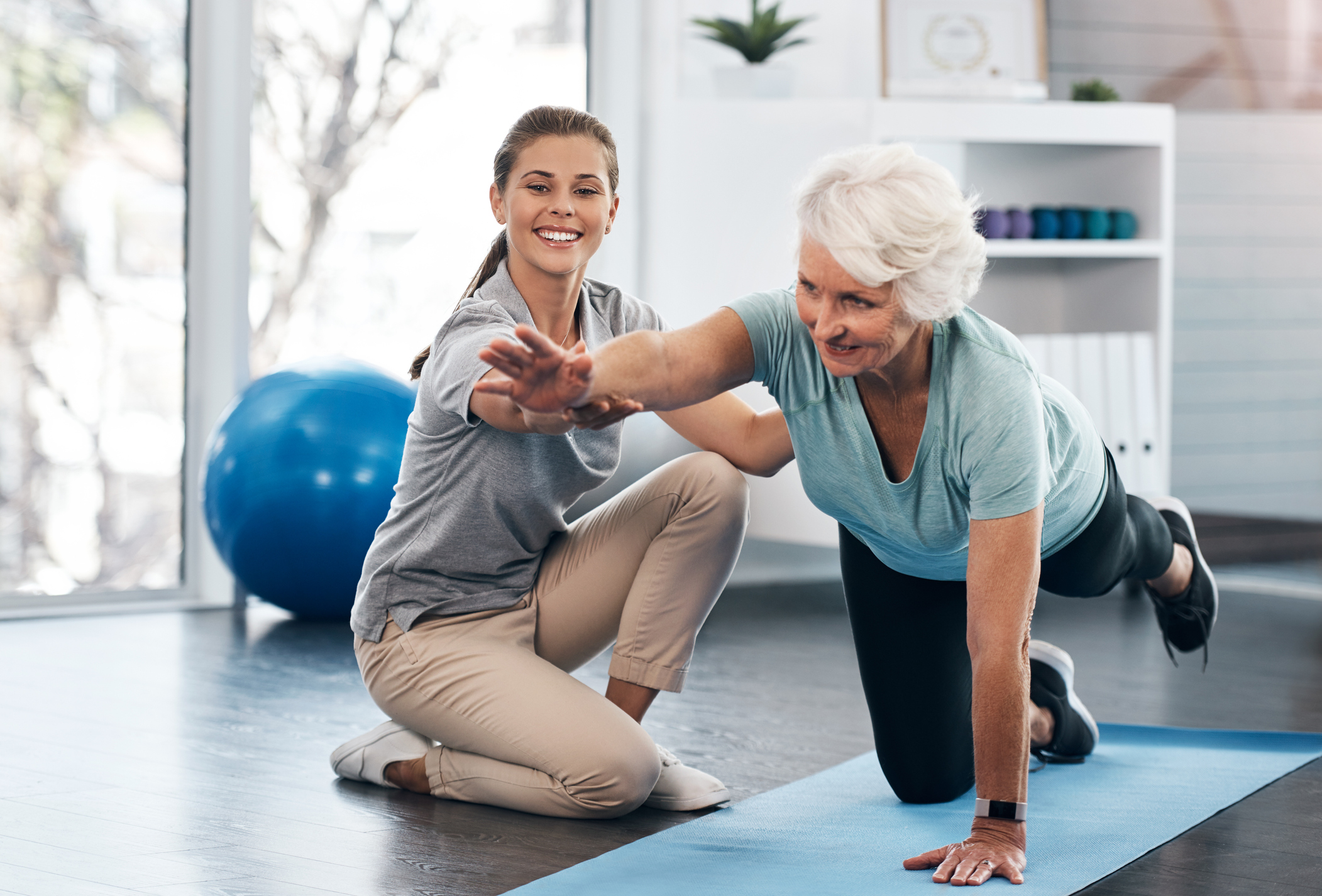Balance is a fundamental aspect of the way we move through the world. For people with gait and balance disorders, functioning in everyday tasks can become difficult. These disorders are not typically isolated conditions. Typically, they are caused by injuries or neurological conditions. If you want to address your balance issues, it is important to understand their source. Knowing more about your condition can enable you to find more focused treatment. When you want to improve your balance, physical therapy can be an excellent choice. Learning how to improve your balance can be highly beneficial for those without balance disorders as well. For people looking to boost their athletic performance, balance training can yield great results. Whether you are working to manage a health condition or develop as an athlete, finding new ways to improve your balance can have a major impact on your life.
6 easy ways to improve balance
- Balance exercises — Exercising can be an effective way to maintain your balancing capabilities. With physical therapy, you can participate in exercises focused on improving your balance. Your physical therapist will help you develop an exercise regimen that caters to your condition and priorities. One popular balance exercise is the single-leg stance. By holding yourself up on one leg, you can challenge your balance and gradually improve over time. When doing balance exercises, it is important not to exceed your capabilities. Taking a fall while exercising sometimes leads to further injury. Your physical therapist can help ensure that your exercise routine is balanced for a safe and effective outcome.
- Focused stretching — Another excellent kind of exercise is focused stretching. Your physical therapist can work with you to build a tailored stretching routine. Stretching regularly is a great way to improve your flexibility. Keeping your body flexible can lead to better balance. Flexibility can also reduce the risk of future injuries that could hurt your balance. When you practice stretching, focus on making controlled motions. Being mindful while stretching can help enhance coordination and balance throughout the body.
- Strengthening exercises — Physical therapy can help you build strength where it matters to improve balance. Exercises such as squats and lunges target key muscles in the legs. With the right exercises prescribed by your physical therapist, you can strengthen the muscles responsible for balance. Most of these muscles are located in the lower body. The glutes, hamstrings and quadriceps are all crucial for maintaining balance. By building strength in these leg muscles, you can work to stay on your feet. Physical therapy exercises that workout your core can also be effective for improving your balance. To engage your core, your physical therapist may recommend exercises like planks and bridges.
- Footwear adjustments — The shoes you wear could be throwing off your balance. If you wear shoes that fit poorly or fail to conform to the shape of your foot, you might not be getting the support you need. Finding shoes that work for you can have a major impact on your balance. For people who have a hard time finding balanced footwear, custom orthotics can also be helpful. These are inserts placed inside your regular shoes. You can get a set of orthotics that are tailored to the shape of your feet. This means you can receive support precisely where you need it.
- Gait training — Balance issues are often tied to gait. Your gait is the way you move when walking or running. If you want to know how you can improve your balance through natural movements, gait training can be a great option. To provide effective care, your physical therapist may conduct a running gait analysis first. A gait assessment can help identify weaknesses that could contribute to your balance issues. By training with your physical therapist, you can work toward addressing these weaknesses and achieving long-term balance improvement.
- Ergonomics — Ergonomics is the science of body mechanics. Your body mechanics are the way you interact with the world and move your body. These movements, when natural and well adjusted, can help you maintain balance. Poor ergonomics, though, can do the opposite. Physical therapy can help you access the tools and techniques you need to optimize your ergonomics. This can mean changing the way you engage in certain activities and using innovative ergonomic equipment. With ergonomics-focused treatment, you can discover a way to engage with the world while staying balanced.
Work to improve your balance with help from SSOR
Ready to discover how you can improve your balance? At SSOR (Specialists in Sports and Orthopedic Rehabilitation), we are ready to help you find a way forward. Our team offers a range of care options designed to help you stay on your feet.
Contact us today for more information or to schedule an initial appointment.

